One of the biggest reasons we embarked on this project was to upgrade from a small wedge camper on a mini truck to a larger, more comfortable camper with generous inside living space—something that we could travel and work in for months at a time. We knew that a flatbed camper would allow for a more efficient layout versus a slide-in model, but finding both a tray and a camper that would suit our wants and needs took a while to become apparent.
MITS Alloy Tray
Aluminum flatbeds (or trays) are all the rage nowadays. Whether you’re working on the farm, hauling Ski-Doos, or semi-permanently installing a camper, a large flat utility space adds efficiencies that aren’t possible with the standard truck bed.
Our 2008 Toyota Tundra is essentially rust-free aside from the dreaded bed bolt rust that is common with many early second-gen Tundras in harsh climates. This could have been fixed, but instead became another excuse as to why we should install a flatbed.
The real reason is that we plan on installing a flatbed camper on the truck. These campers allow for significantly improved layouts and available storage space. Although expensive, we decided it was worth spending the money on something we plan on living in the long term.
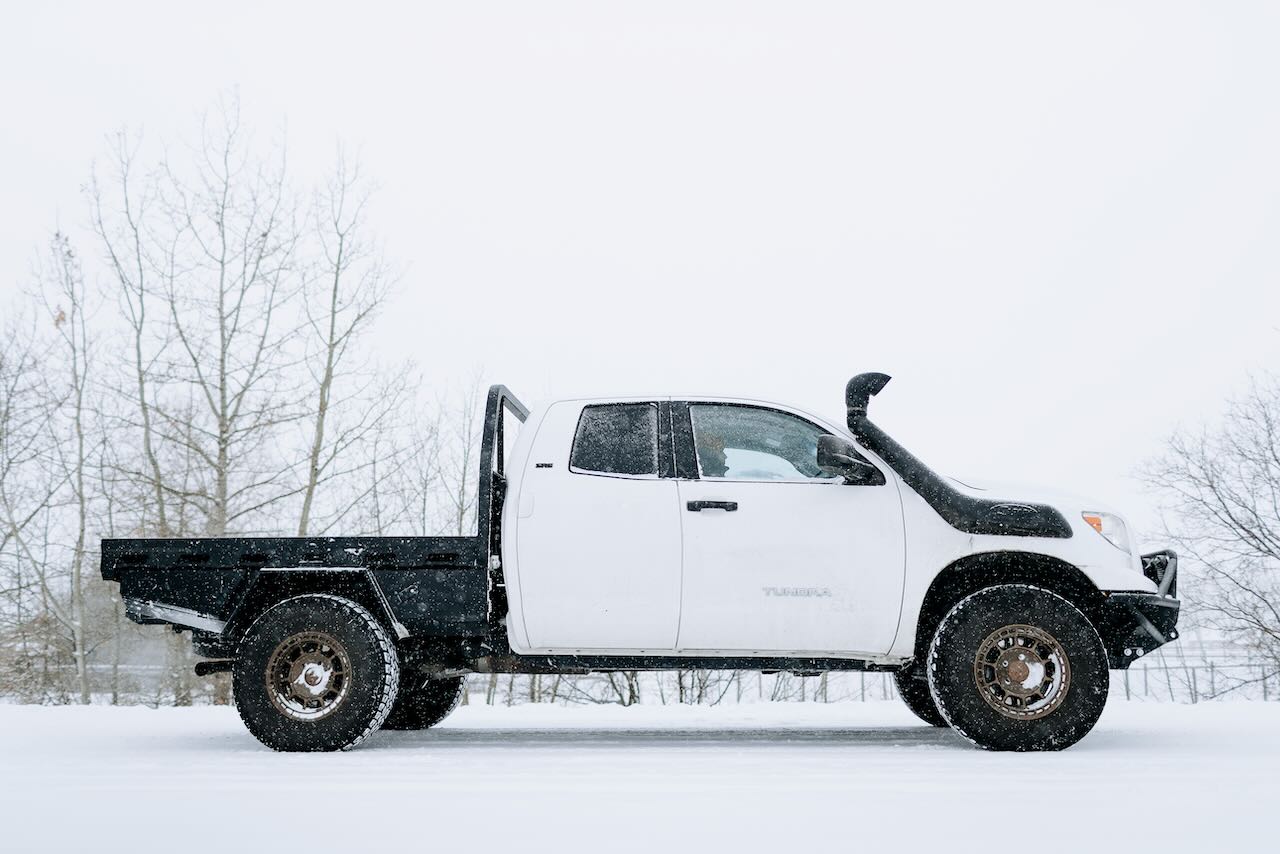

Knowing that we wanted a flatbed camper didn’t help in choosing a tray. There are a multitude of companies offering quality options for our Tundra. PCOR, AlumaTray, MITS Alloy, Summit Expedition Trucks, etc., were all on the shortlist.
Based in Newcastle, New South Wales, MITS Alloy opened in 2012 and has now grown to a team of 75. In order to expand to North America, you can now find dealers across the United States.
We traveled to Mule Expedition Outfitters in Issaquah, Washington, to have the 7ft MITS Alloy tray installed. The tray comes complete with black powder coat, side cabinets, headache rack, water tank, and rear drawer. Mule built a custom receiver for the truck that is not only tucked up higher but also wraps around the frame to help distribute the load of the flatbed and camper, all while reducing torsional flex in the frame. Plus, the 35-inch spare tire now fits in its original location with room to spare.
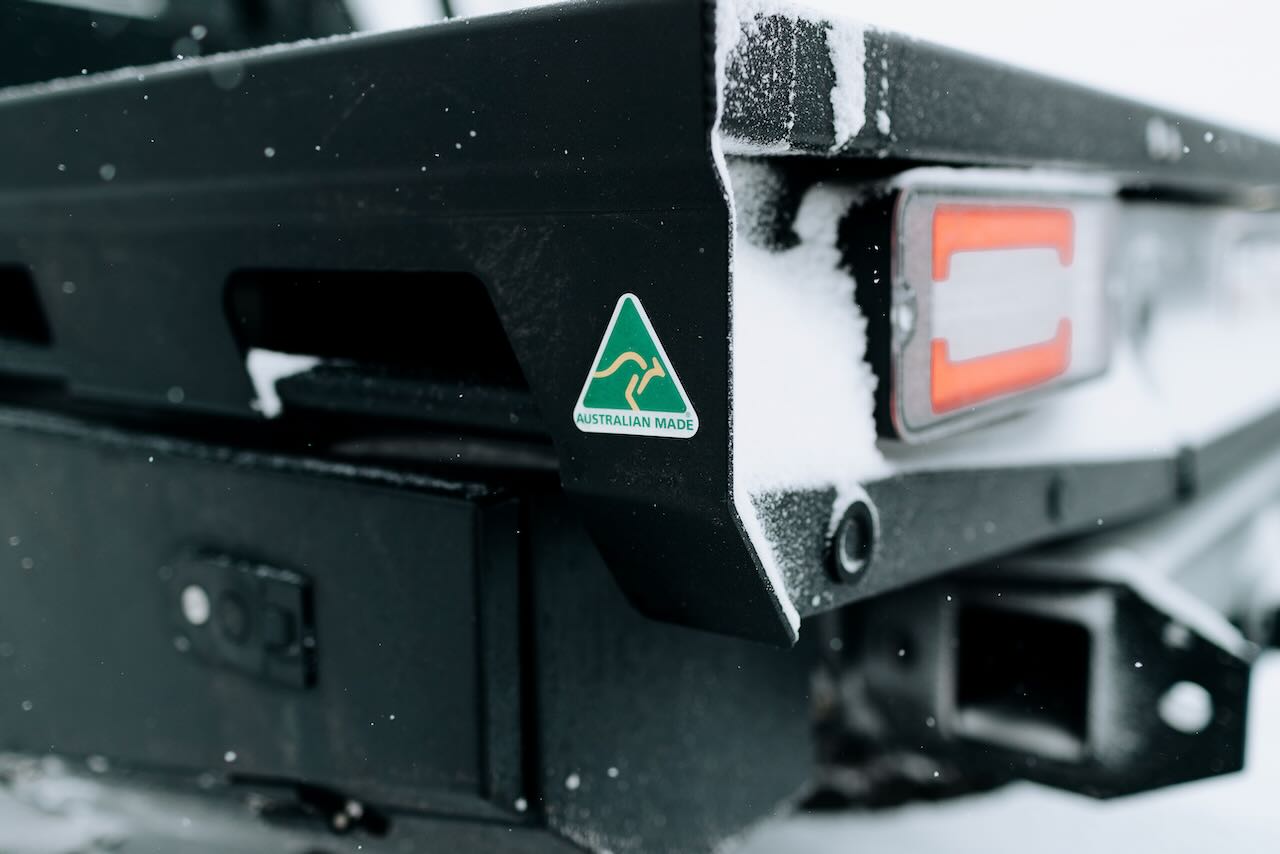
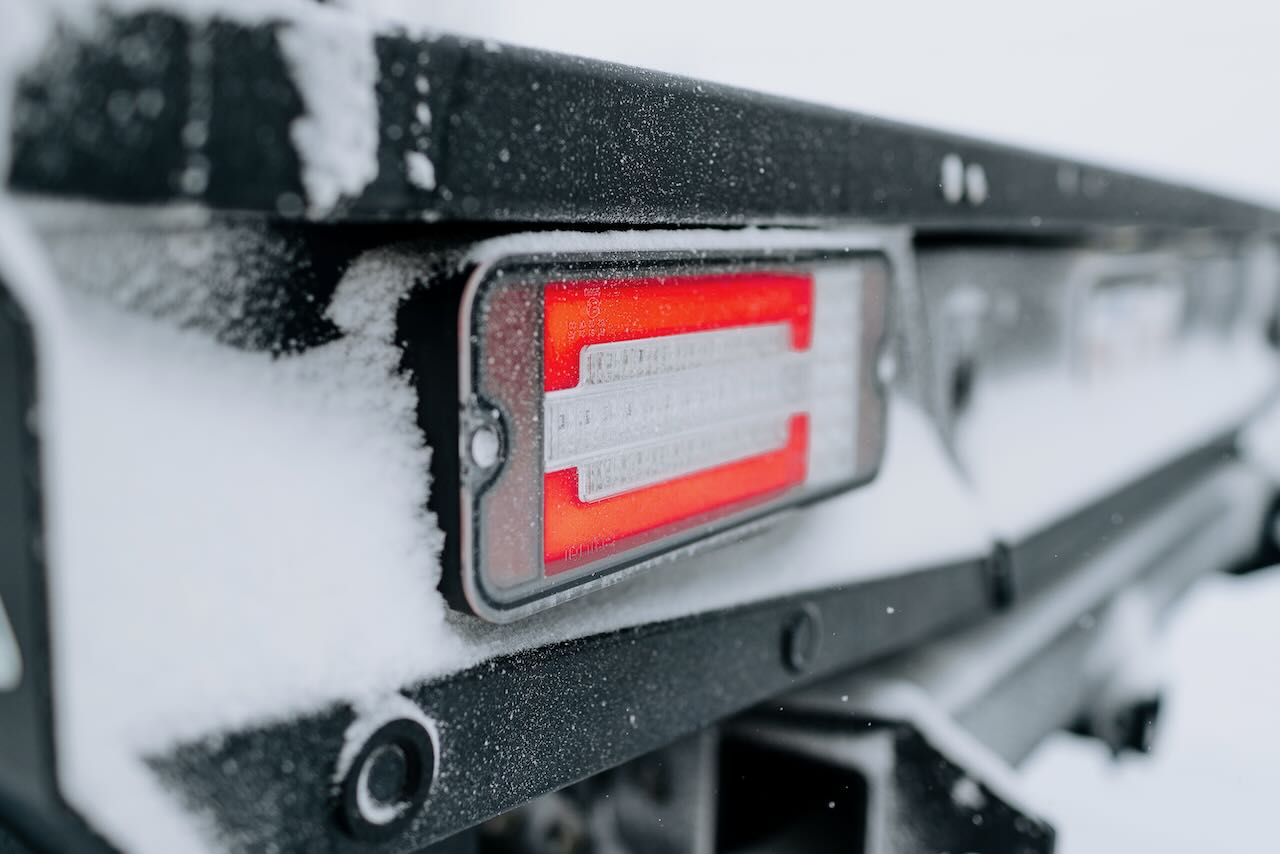
With all of the options installed, the tray weighs about 100 pounds more than the stock bed. In order to trim that weight down, we removed the cavernous rear drawer and actually trimmed the weight to below the factory bed weight. Although the drawer is extremely useful, dropping as many pounds as possible is paramount to making this project work.
Overland Explorer Vehicles Alpine Flatbed Camper
Making a decision on what camper to buy for our Tundra was a difficult one. Price, weight, availability, layout, and construction quality were all important factors. For us, another factor was the Canadian/US exchange rate. Finding something in Canada would save us a significant amount of hard-earned Canadian dollars.
We spent a few nights in X Overland’s Prospector and Four Wheel Camper Hawk Flatbed and a weekend in AT Overland’s first Aterra XL camper. The FWC Hawk was the least expensive option, and the Aterra was the most expensive. Both had lead times that stretched to well over a year. Used campers seemed to be non-existent, and parts to build our own were just as scarce.
Honestly, we couldn’t find anything that fit our needs until Overland Explorer Vehicles (OEV) released their flatbed Alpine model. Based on their Back Country slide-in camper, but with sides that extend down for use on a flatbed, it felt like the perfect combo for us. Not too big, not too small. Just right. The three-month lead time was also extremely compelling.
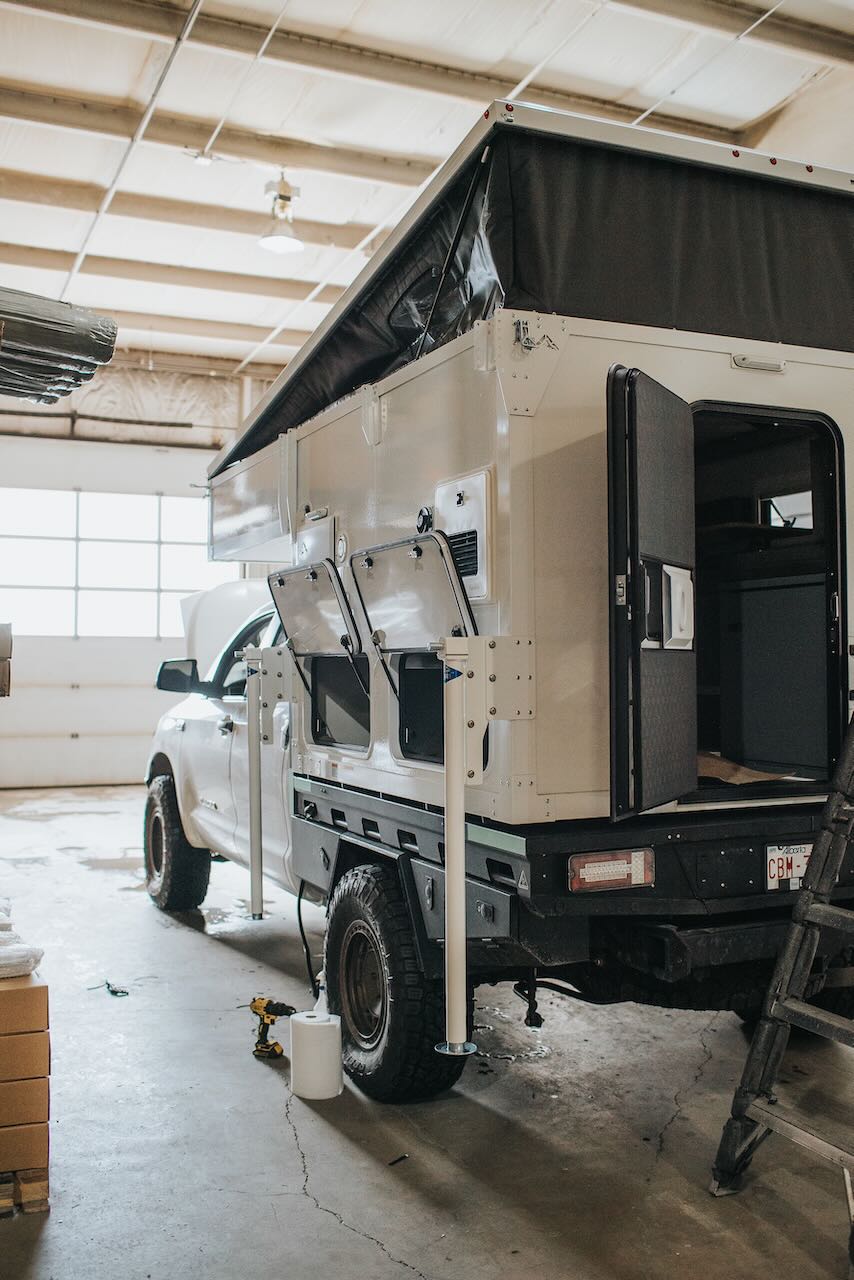

The Alpine checks off quite a few other boxes for us: A queen size bed that is always made (with clothes storage below), a wraparound seating area for use as a mobile office, insulated hard and soft walls, and a design that introduces plenty of natural light within the living area. The high R-value of the walls and roof, along with the efficient propane heater, will keep us nice and warm when we inevitably find ourselves in winter conditions. Aside from the layout, a factory visit and conversation with designer Mark Cymbaluk (as he walked through the engineering and construction methods) gave us confidence it could hold up to long-term living.
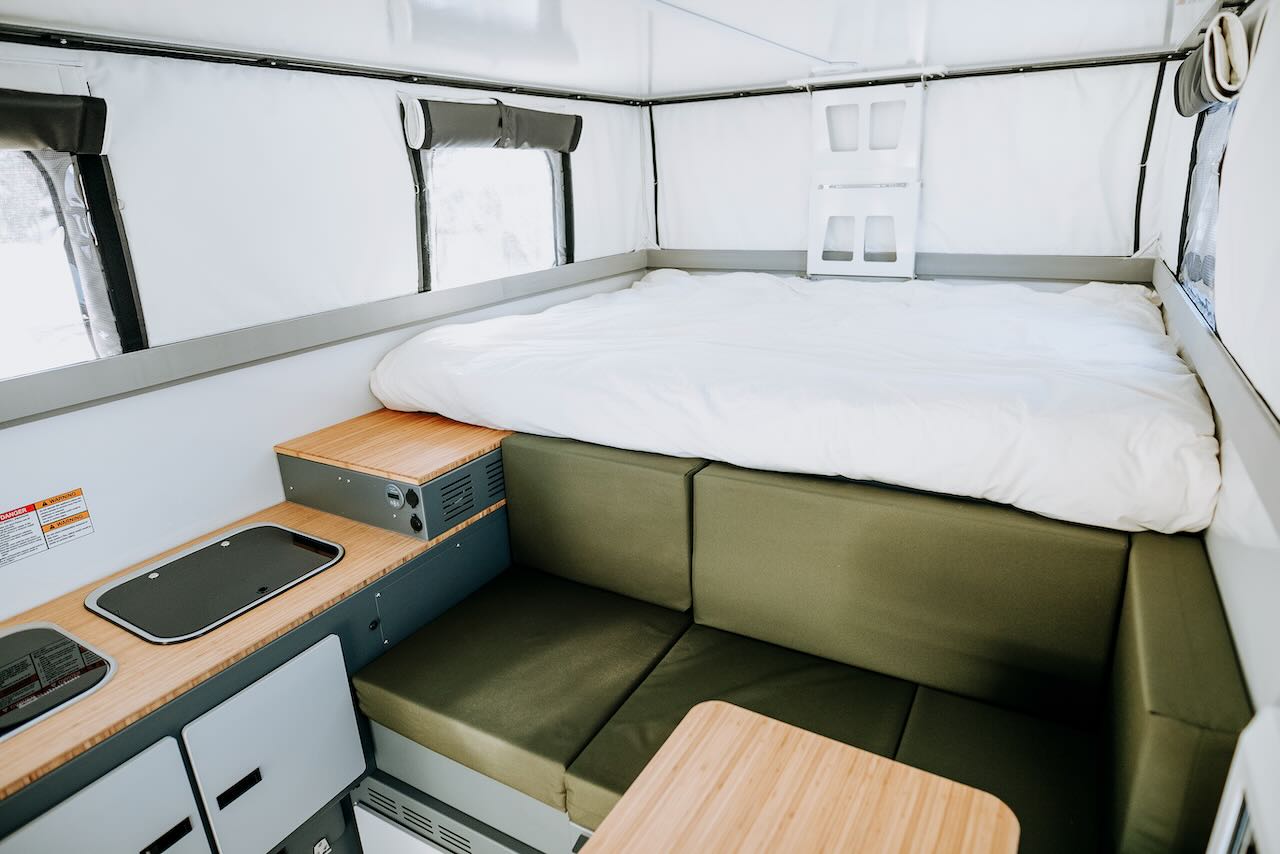
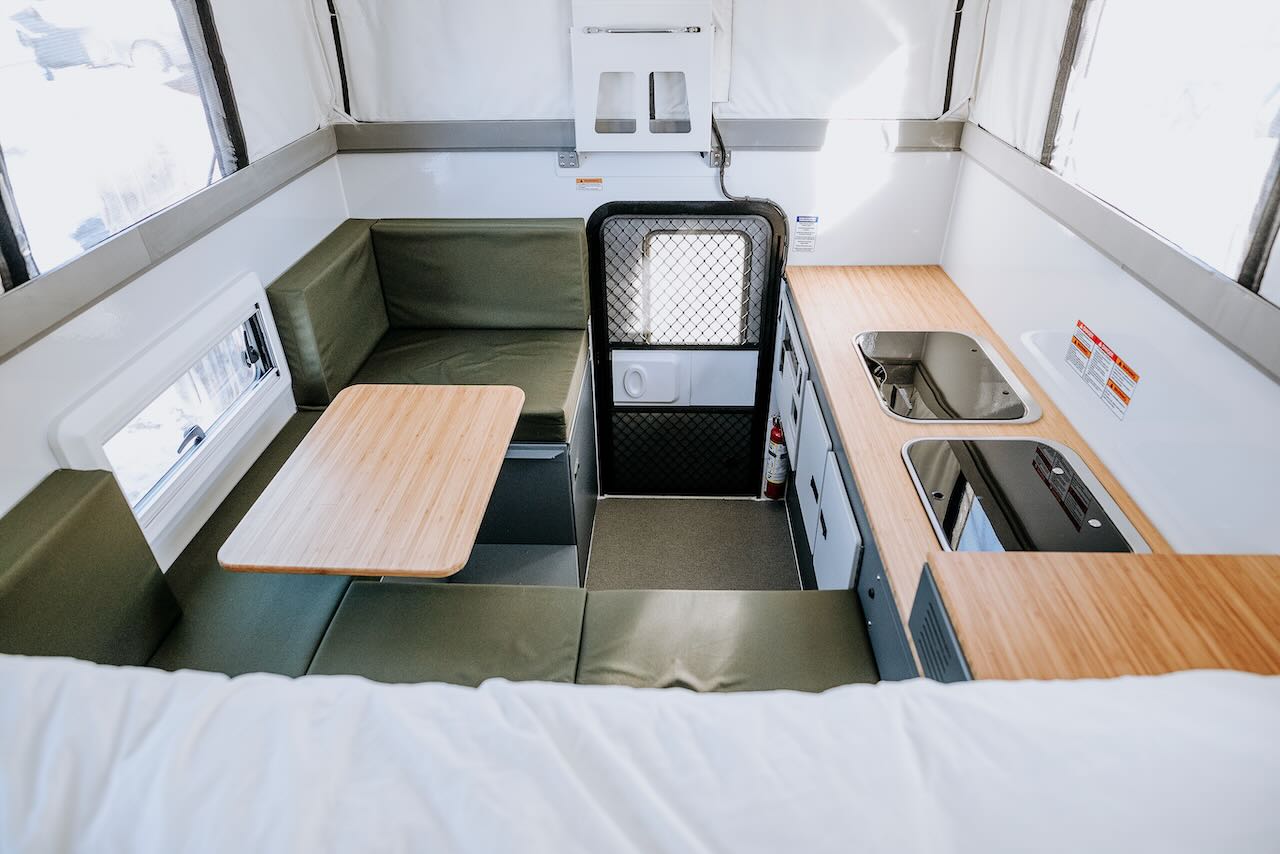
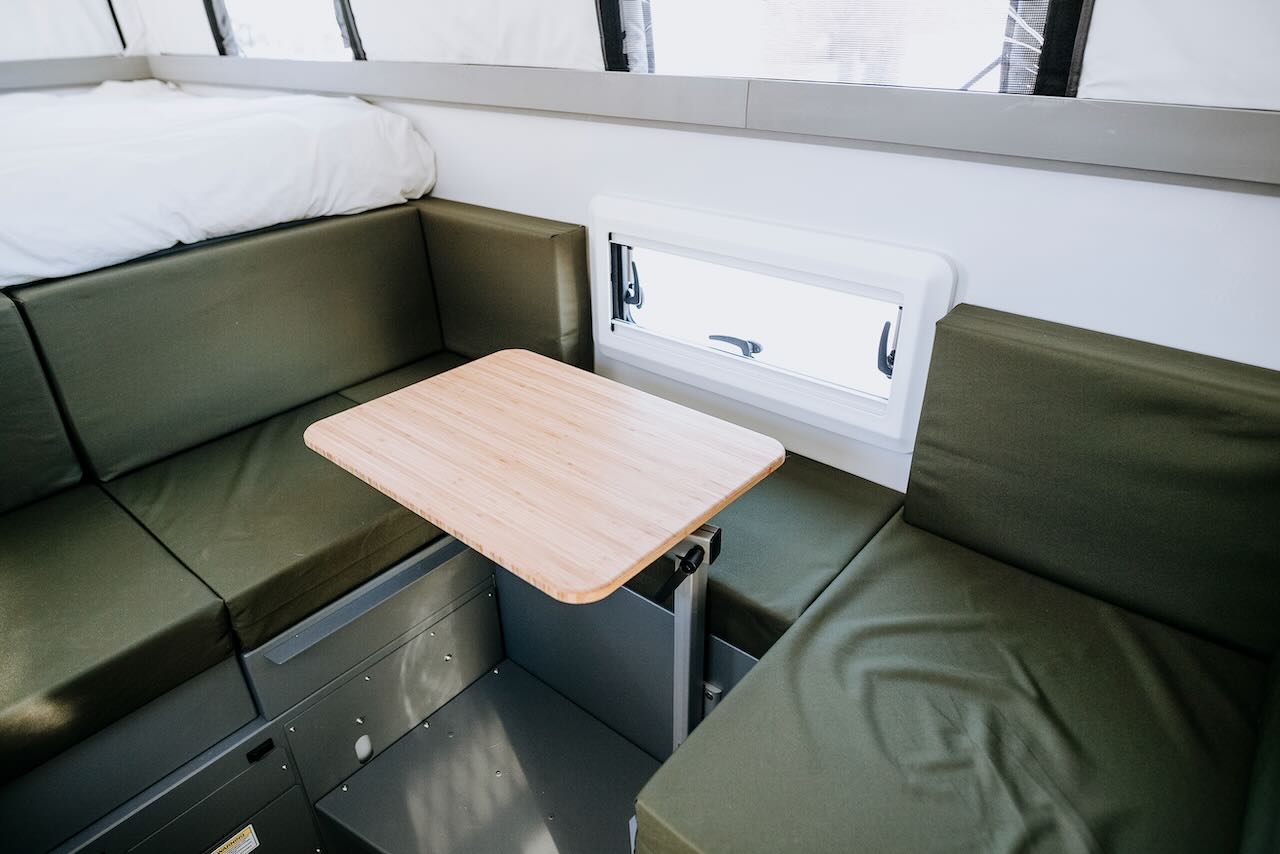
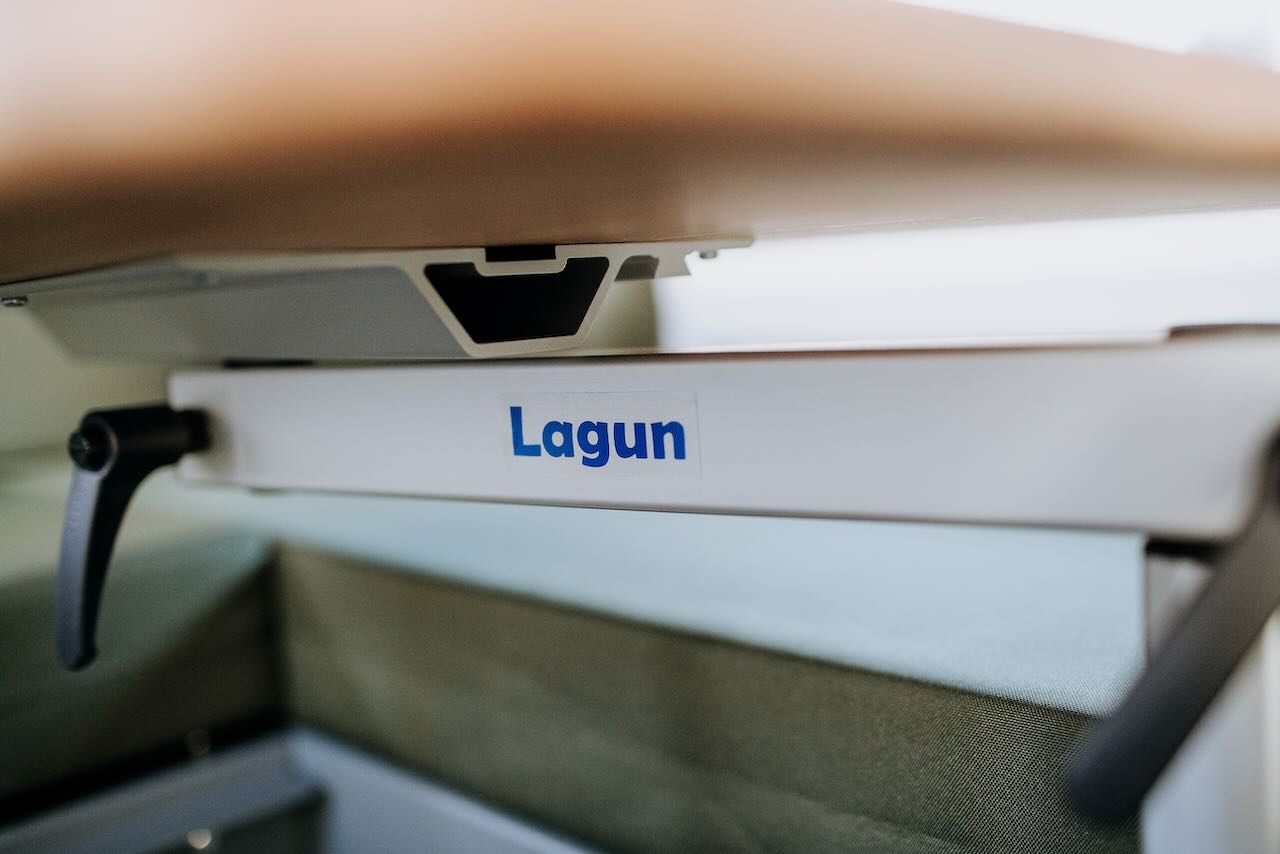
Some of our favorite standard features were the Victron SmartSolar MPPT 30/100 solar charge controller, Victron Orion-Tr DC-DC 12/12-30 charger, Truma Vario Heater, Truma Aquago hot water heater, 20-gallon fresh water tank, and fancy-schmancy bamboo countertops. Beyond the components, the quality of the installation and wiring is what convinced us to pull the trigger.
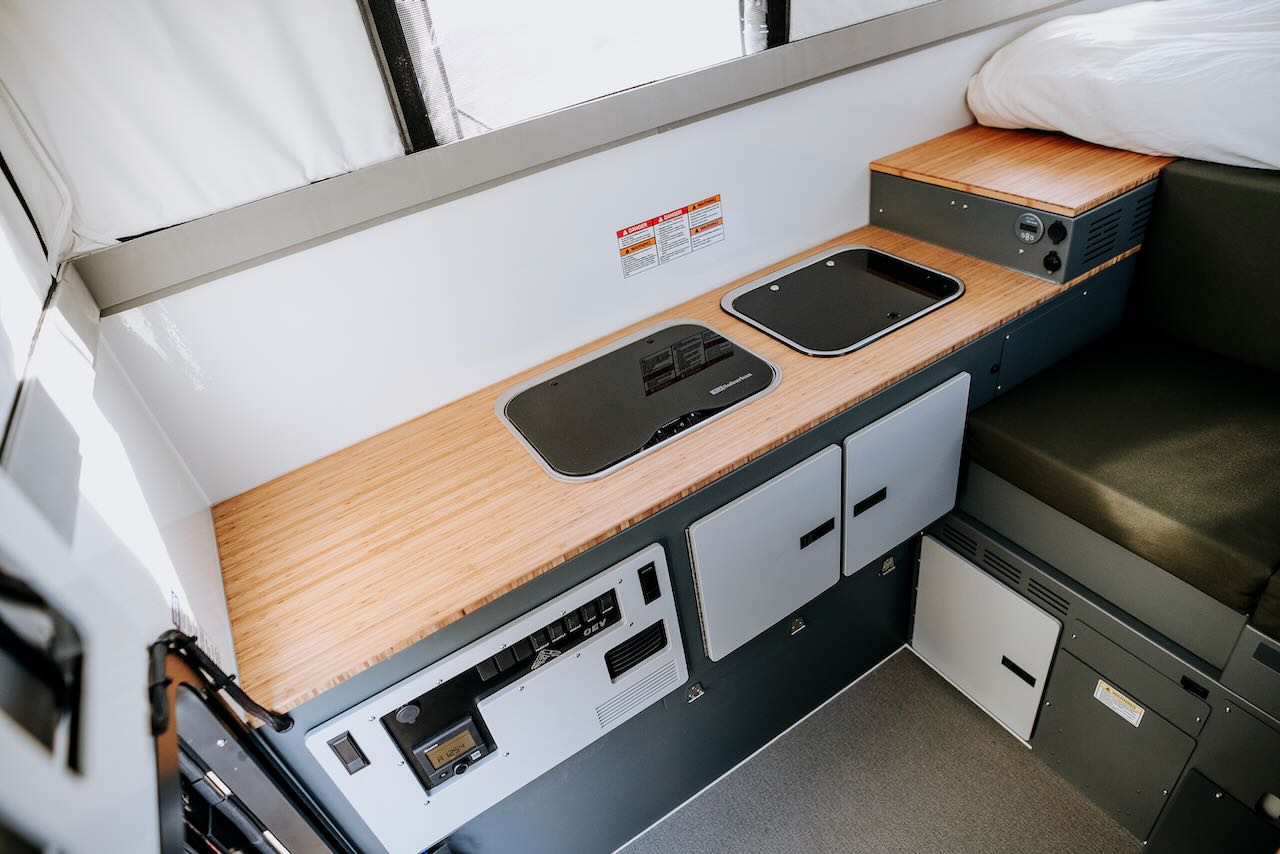
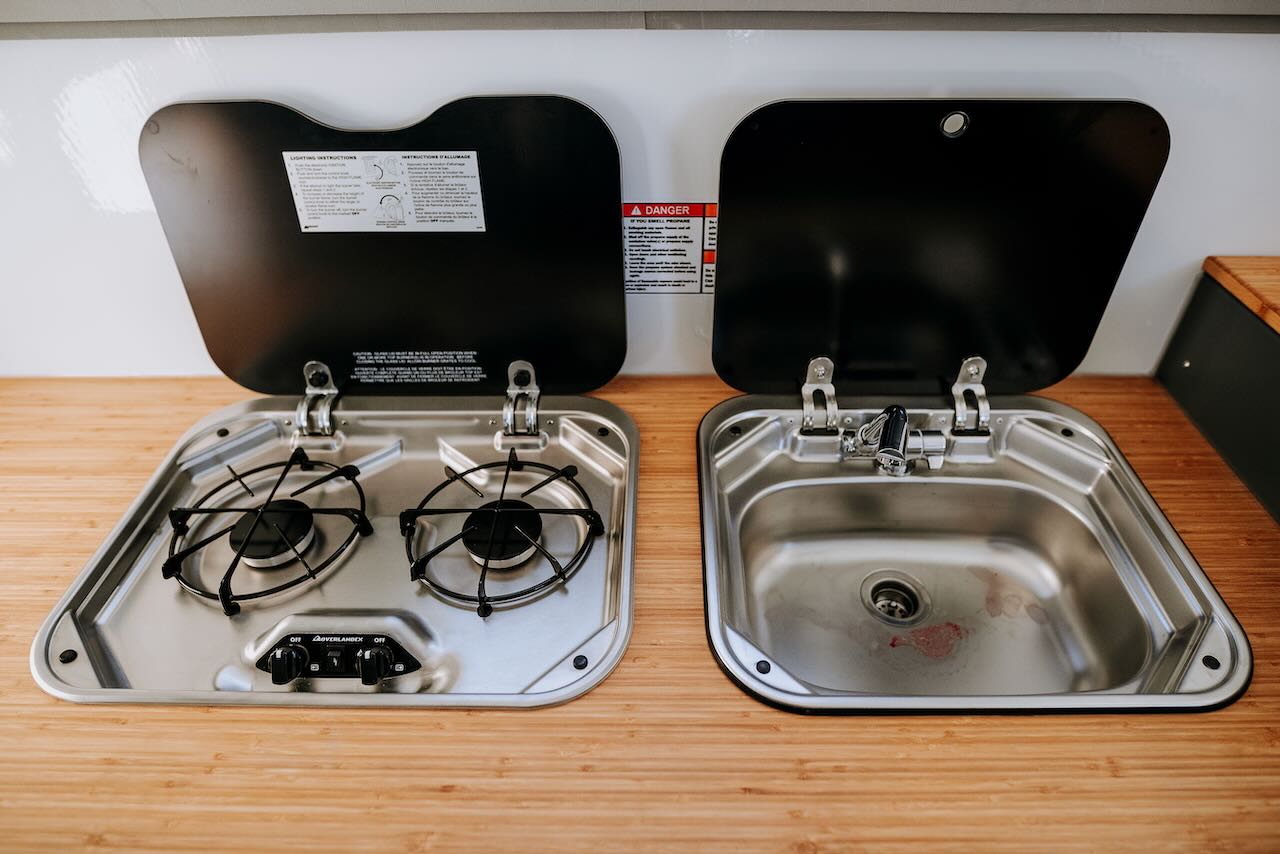
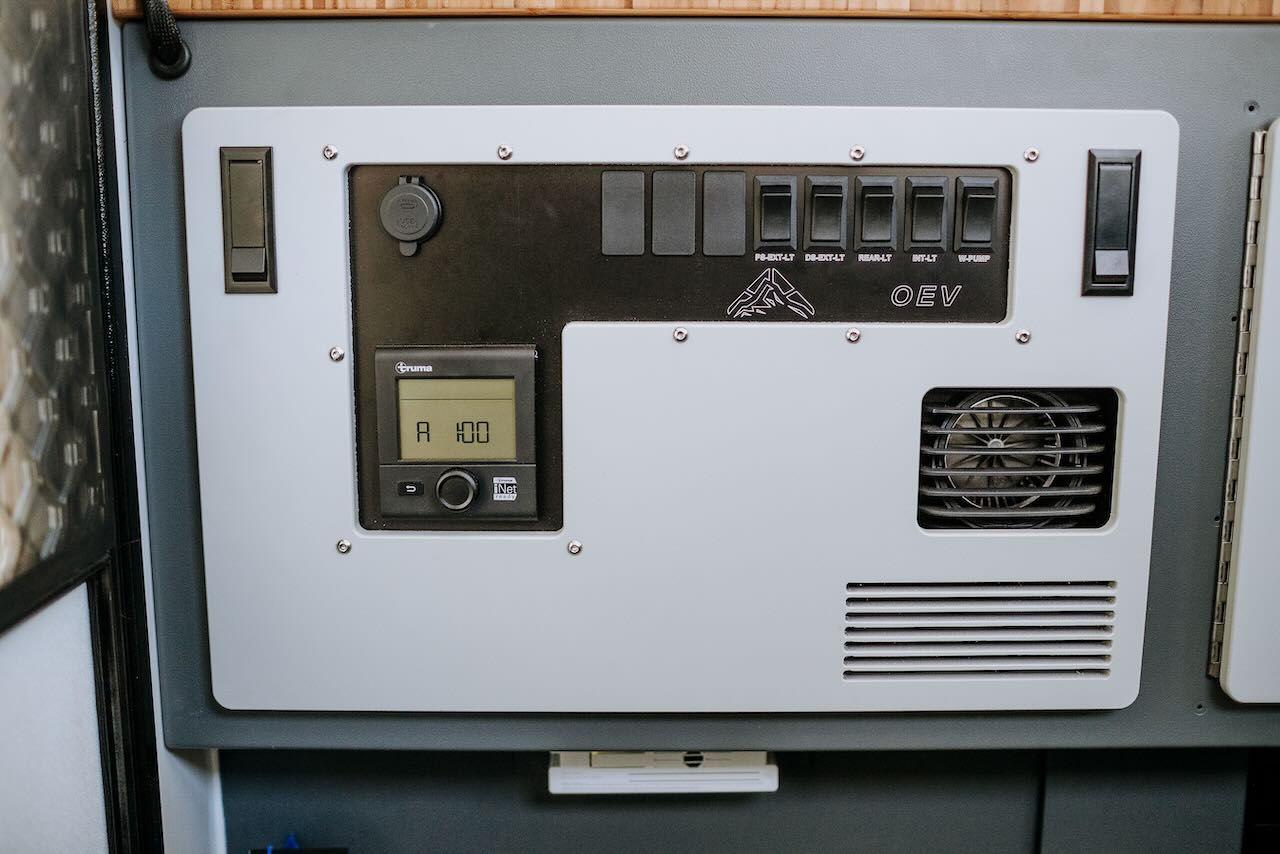

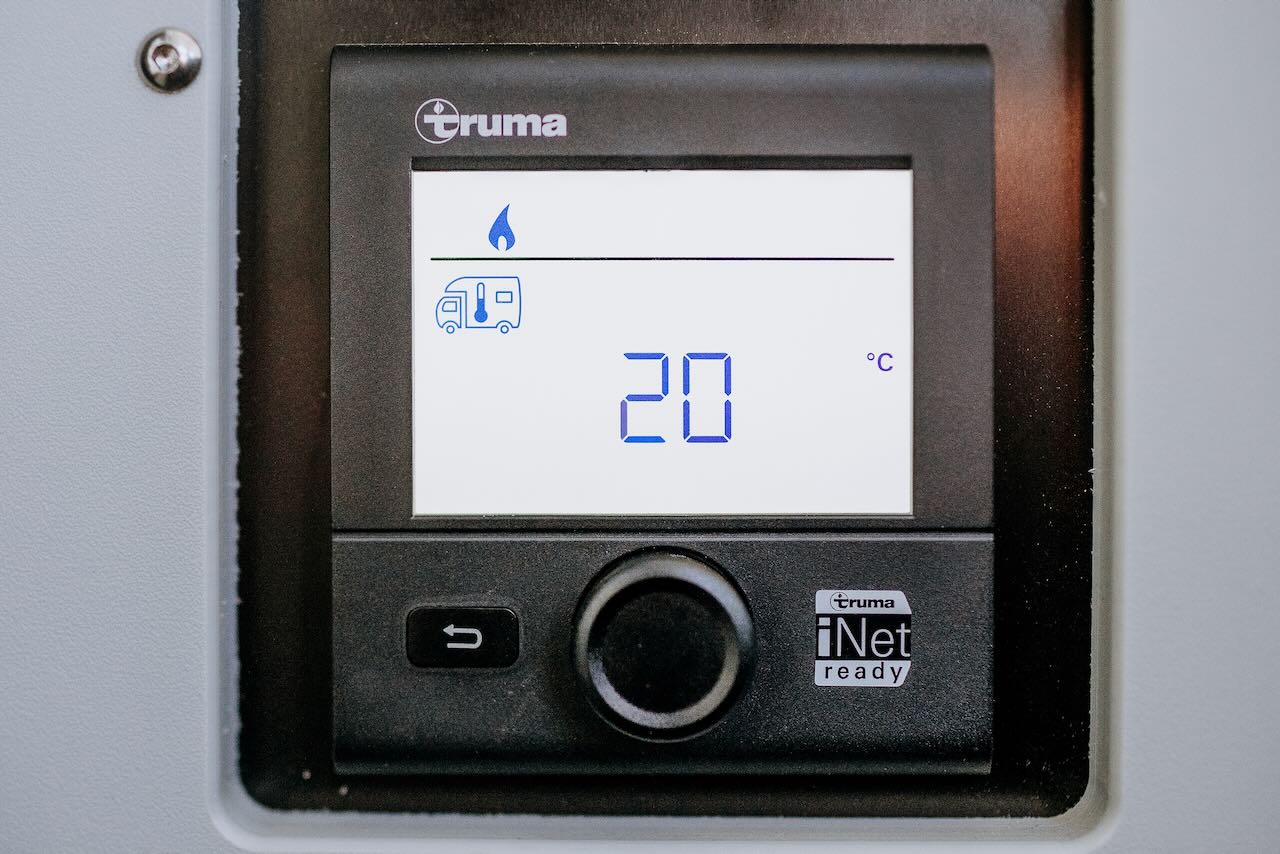
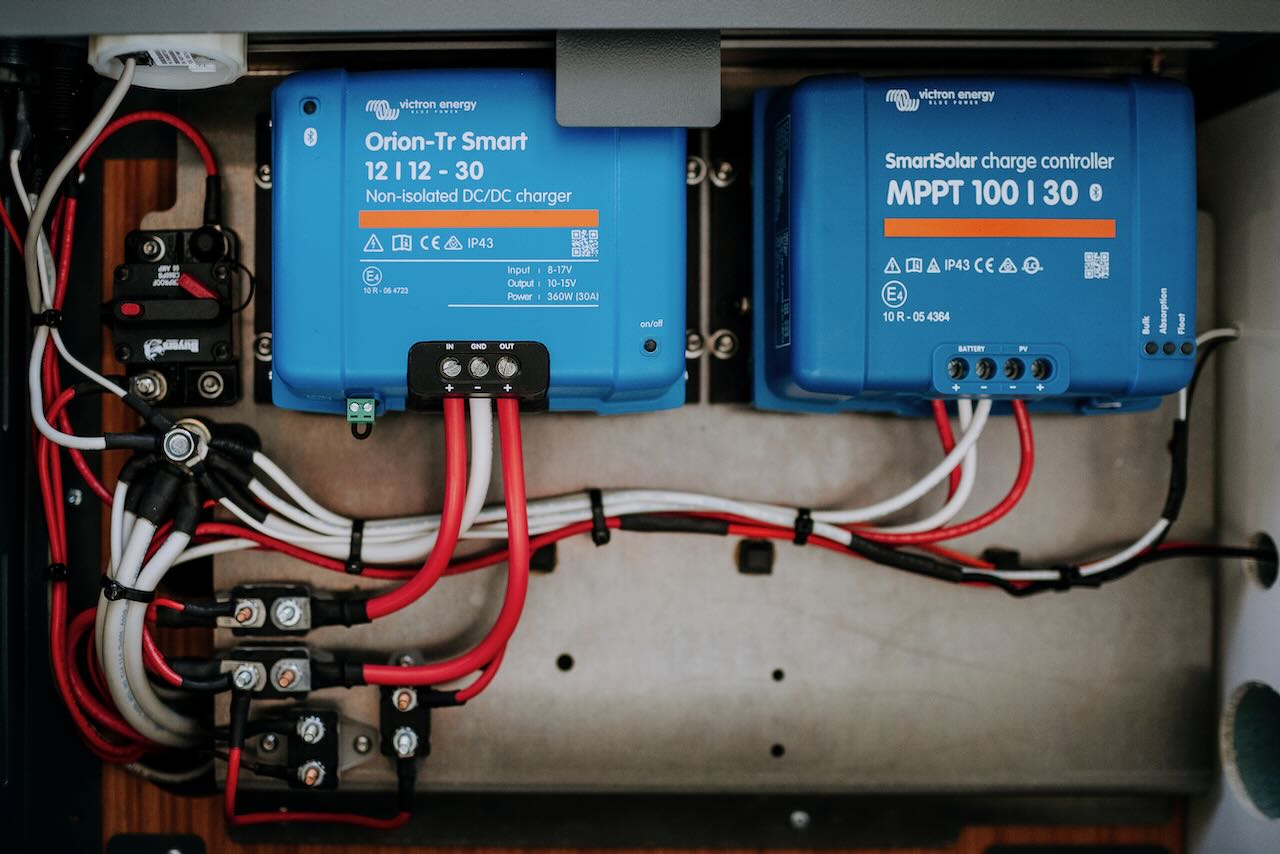

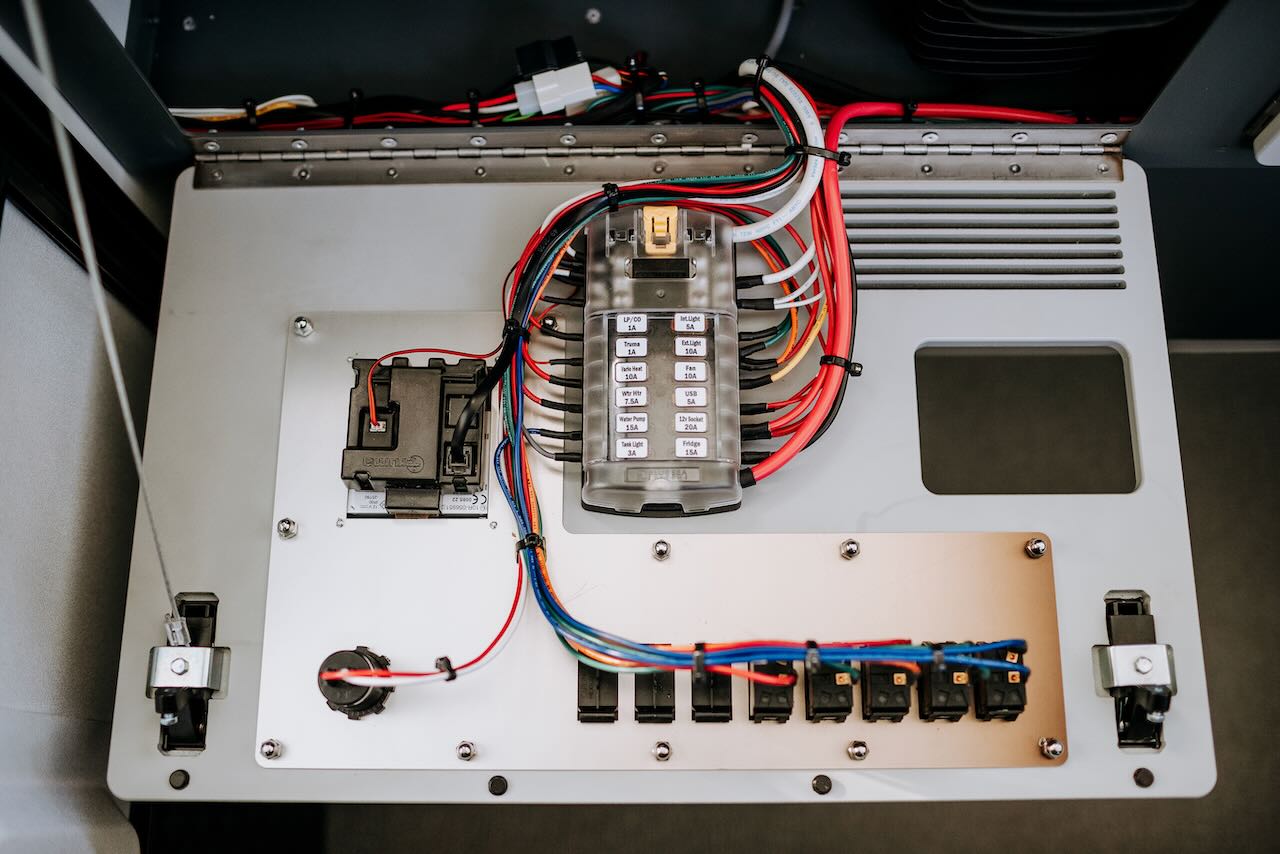
Normally, the camper also comes standard with a Thetford cassette toilet, but to simplify the camper and keep the weight low, we eliminated that as well as selecting absolutely none of the available factory options such as roof racks, molle panels, solar panels, or awnings.
OEV designed and built custom mounts to tie the Alpine camper together with the MITS Alloy Tray. The 20 rubber feet on the bottom and front of the camper combined with the Torklift Derringer tie-downs provide a secure mounting solution while allowing a small amount of movement. This is designed to reduce stress on the tray and truck frame.
Next Steps
We ordered the camper as bare bones as possible in order to customize it to our liking. A trio of 100-watt Zamp Obsidian solar panels, a Dometic CFX3 55IM fridge/freezer, three Antigravity Batteries V1 100-Ah lithium batteries, and a Dometic CI20 induction cooktop are all getting installed next in order to facilitate full-time living.



